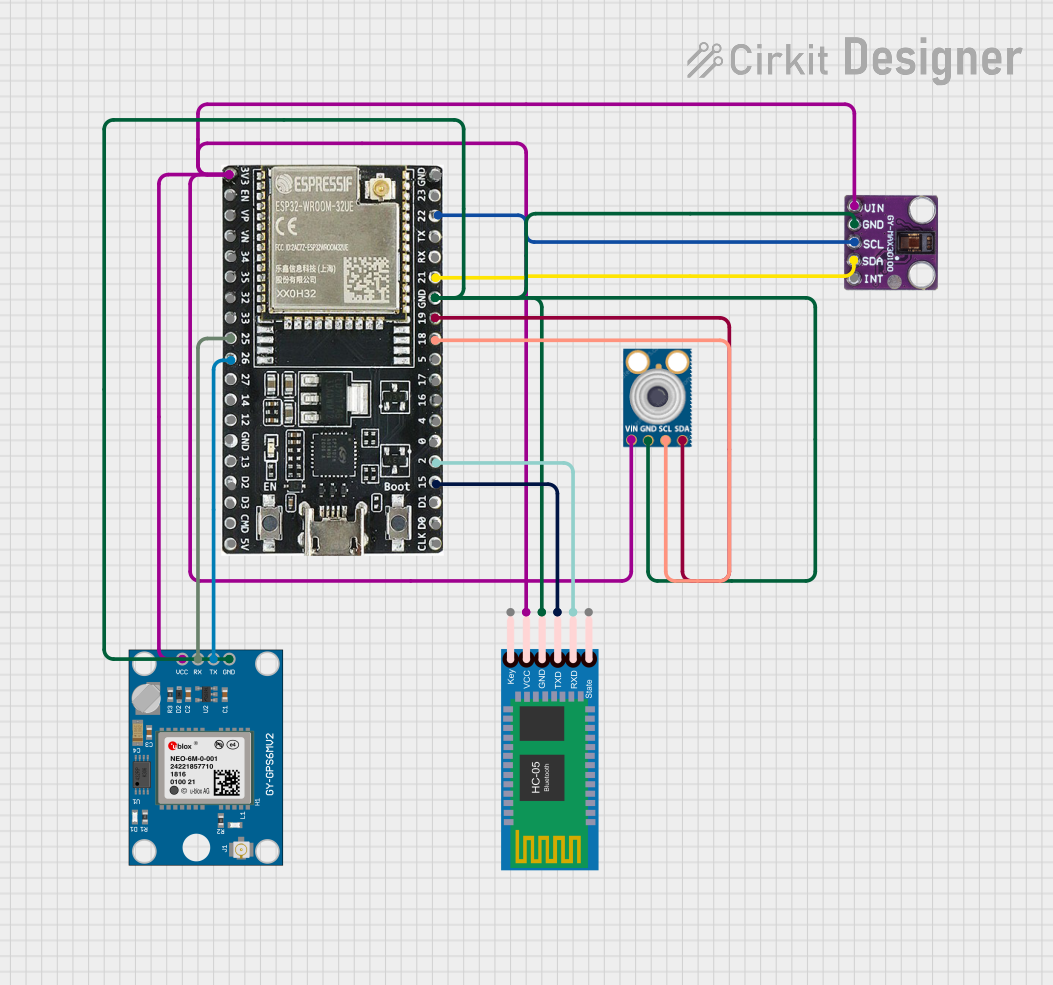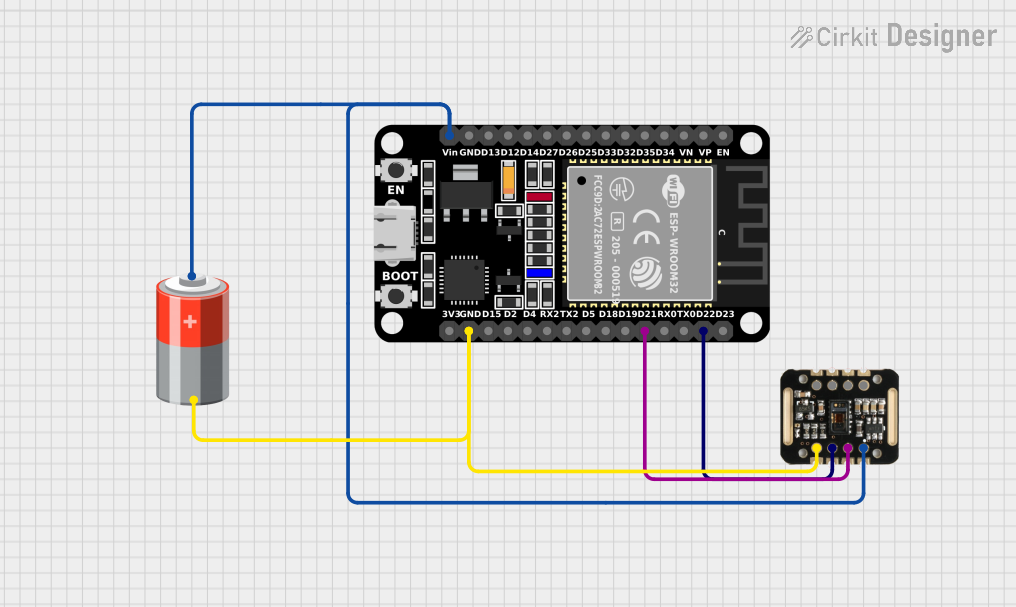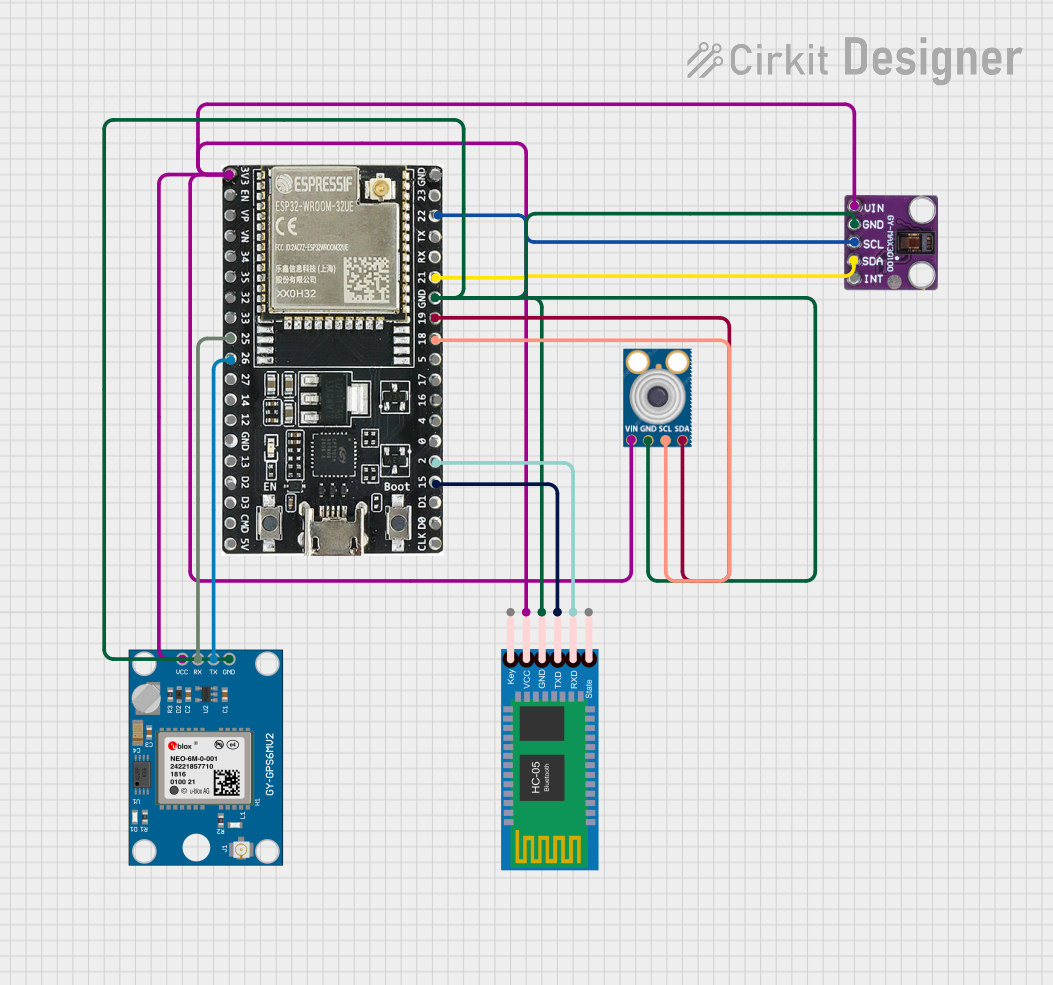
How to Use MAX30102: Examples, Pinouts, and Specs
 Design with MAX30102 in Cirkit Designer
Design with MAX30102 in Cirkit DesignerIntroduction
The MAX30102 is an integrated pulse oximetry and heart-rate monitor bio-sensor module. It is designed for the wearable health market and features internal LEDs, photodetectors, optical elements, and low-noise electronics with ambient light rejection. The device is commonly used in fitness trackers, smartwatches, and medical monitoring devices to measure blood oxygen saturation (SpO2) levels and heart rate through the skin.
Explore Projects Built with MAX30102

 Open Project in Cirkit Designer
Open Project in Cirkit Designer
 Open Project in Cirkit Designer
Open Project in Cirkit Designer
 Open Project in Cirkit Designer
Open Project in Cirkit Designer
 Open Project in Cirkit Designer
Open Project in Cirkit DesignerExplore Projects Built with MAX30102

 Open Project in Cirkit Designer
Open Project in Cirkit Designer
 Open Project in Cirkit Designer
Open Project in Cirkit Designer
 Open Project in Cirkit Designer
Open Project in Cirkit Designer
 Open Project in Cirkit Designer
Open Project in Cirkit DesignerTechnical Specifications
Key Technical Details
- Power Supply Voltage (VCC): 1.8V to 3.3V
- Operating Current (Typical): 600µA (LEDs on), 7µA (Standby)
- Peak LED Output Current: 50mA
- LED Wavelengths: 660nm (Red), 880/905nm (IR)
- Communication Interface: I2C (up to 400kHz)
- FIFO Memory: 32-bit word x 32 data words
- Resolution: 16-bit ADC
- Operating Temperature Range: -40°C to +85°C
Pin Configuration and Descriptions
| Pin Number | Name | Description |
|---|---|---|
| 1 | SDA | I2C Serial Data |
| 2 | SCL | I2C Serial Clock |
| 3 | INT | Interrupt Output |
| 4 | IRD | IR LED Driver |
| 5 | RD | Red LED Driver |
| 6 | GND | Ground Connection |
| 7 | VCC | Power Supply Input |
Usage Instructions
Integration into a Circuit
To use the MAX30102 in a circuit:
- Connect VCC to a 1.8V to 3.3V power source.
- Connect GND to the system ground.
- Interface the SDA and SCL pins with the I2C bus of a microcontroller, such as an Arduino UNO.
- The INT pin can be connected to an interrupt-capable GPIO pin on the microcontroller to handle interrupt-driven data acquisition.
Best Practices
- Ensure that the power supply is clean and within the specified voltage range.
- Use pull-up resistors on the SDA and SCL lines, typically 4.7kΩ to 10kΩ.
- Keep the I2C bus lines as short as possible to reduce noise and interference.
- Avoid placing the sensor under direct sunlight or strong artificial light sources to prevent inaccurate readings.
Example Code for Arduino UNO
#include <Wire.h>
// MAX30102 I2C address (usually 0x57)
#define MAX30102_ADDRESS 0x57
void setup() {
Serial.begin(9600);
Wire.begin();
// Initialize MAX30102 with default settings
max30102_init();
}
void loop() {
// Read data from MAX30102
int heartRate = readHeartRate();
int spO2 = readSpO2();
// Output the heart rate and SpO2 values
Serial.print("Heart Rate: ");
Serial.print(heartRate);
Serial.print(" bpm, SpO2: ");
Serial.print(spO2);
Serial.println(" %");
// Small delay between readings
delay(1000);
}
void max30102_init() {
// Add initialization code specific to MAX30102
}
int readHeartRate() {
// Add code to read heart rate from MAX30102
return 0; // Placeholder return value
}
int readSpO2() {
// Add code to read SpO2 from MAX30102
return 0; // Placeholder return value
}
Note: The above code is a template and does not contain the actual implementation for initializing the MAX30102 or reading data from it. You will need to use a library or write additional functions to communicate with the device and process the sensor data.
Troubleshooting and FAQs
Common Issues
- No Data Output: Ensure that the I2C connections are correct and that the device is properly powered.
- Inaccurate Readings: Check for proper skin contact and avoid direct exposure to external light sources.
- I2C Communication Errors: Verify pull-up resistors are installed and check for noise on the I2C lines.
Solutions and Tips
- If you encounter no data output, double-check the I2C address and wiring connections.
- For inaccurate readings, make sure the sensor is placed firmly against the skin without any obstructions.
- Use an oscilloscope to check the integrity of the I2C signals if communication errors persist.
FAQs
Q: Can the MAX30102 be used without an Arduino? A: Yes, the MAX30102 can be interfaced with any microcontroller that supports I2C communication.
Q: How can I improve the accuracy of the sensor? A: Ensure stable contact with the skin, avoid motion artifacts, and shield the sensor from external light.
Q: Is the MAX30102 suitable for medical applications? A: While the MAX30102 can provide useful data for health monitoring, it is not a substitute for a medical-grade device. Always consult with a healthcare professional for medical use.
Q: What libraries can be used with the MAX30102 for Arduino? A: There are several libraries available for interfacing with the MAX30102, such as the "MAX30105" library by SparkFun, which is also compatible with the MAX30102.